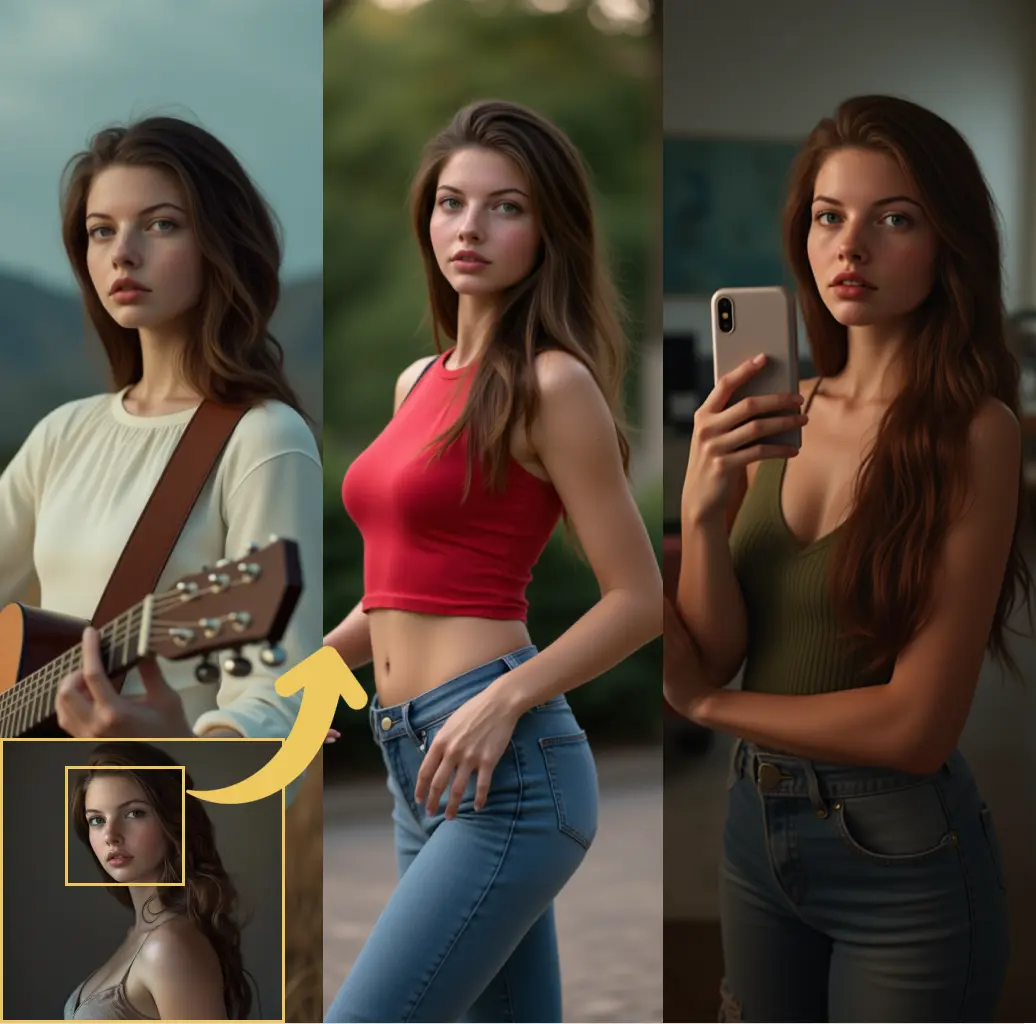ComfyUI Node: DJZ Tiling V2
djzTilingV2
Categoryimage/masking
DriftJohnson (Account age: 4052days) Extension
DJZ-Nodes Latest Updated
2025-04-25 Github Stars
0.04K
How to Install DJZ-Nodes
Install this extension via the ComfyUI Manager by searching for DJZ-Nodes- 1. Click the Manager button in the main menu
- 2. Select Custom Nodes Manager button
- 3. Enter DJZ-Nodes in the search bar
Visit ComfyUI Online for ready-to-use ComfyUI environment
- Free trial available
- 16GB VRAM to 80GB VRAM GPU machines
- 400+ preloaded models/nodes
- Freedom to upload custom models/nodes
- 200+ ready-to-run workflows
- 100% private workspace with up to 200GB storage
- Dedicated Support
DJZ Tiling V2 Description
Create tiling masks for images with customizable patterns, blending modes, feathering, and inner radius control.
DJZ Tiling V2:
The djzTilingV2 node is designed to create a tiling mask for images, which is particularly useful in digital art and design applications where seamless patterns or textures are required. This node allows you to generate masks that can be used to control the visibility or blending of different image regions, based on a specified tiling mode. The node supports various tiling modes, such as horizontal, vertical, and both, enabling you to customize the pattern's orientation. Additionally, it offers features like feathering, which smooths the transition between masked and unmasked areas, and an inner radius setting that defines a central region to remain unaffected by the mask. These capabilities make djzTilingV2 a versatile tool for artists looking to create intricate and visually appealing designs with ease.
DJZ Tiling V2 Input Parameters:
image
The image parameter is the input image on which the tiling mask will be applied. It serves as the base for generating the mask, and its dimensions are used to calculate the center and maximum distance for the tiling effect. The image should be in a format that the node can process, typically a multi-dimensional array representing pixel data.
tiling_mode
The tiling_mode parameter determines the orientation of the tiling effect. It can be set to "xy" for both horizontal and vertical tiling, "x" for horizontal only, or "y" for vertical only. This parameter significantly impacts the pattern's direction and how the mask is applied across the image.
feathering_strength
The feathering_strength parameter controls the intensity of the feathering effect, which smooths the transition between masked and unmasked areas. A higher value results in a more gradual transition, while a lower value creates a sharper edge. The default value is typically 1.0, with a range that can be adjusted to suit the desired effect.
feathering_curve
The feathering_curve parameter specifies the type of curve used to apply the feathering effect. Common options include "linear" and other curve types that define how the transition is smoothed. This parameter allows for further customization of the mask's edge softness.
invert_mask
The invert_mask parameter is a boolean option that, when enabled, inverts the mask's effect. This means areas that would typically be masked become unmasked and vice versa. It provides flexibility in how the mask is applied, allowing for creative control over the final output.
inner_radius_percent
The inner_radius_percent parameter defines the size of the central region that remains unaffected by the mask, expressed as a percentage of the maximum distance. This allows you to preserve a portion of the image while applying the tiling effect to the surrounding areas. The default value is often set to 50.0, but it can be adjusted to change the size of the unaffected region.
preview_mask
The preview_mask parameter is a boolean option that, when enabled, allows you to preview the generated mask before applying it to the image. This feature is useful for ensuring the mask meets your expectations and making adjustments as needed.
DJZ Tiling V2 Output Parameters:
mask_array
The mask_array is the primary output of the djzTilingV2 node. It is a two-dimensional array representing the generated mask, where each value indicates the level of masking applied to the corresponding pixel in the input image. A value of 0 typically represents a fully masked area, while a value of 1 indicates no masking. This output can be used in further processing steps, such as blending or compositing images.
DJZ Tiling V2 Usage Tips:
- Experiment with different
tiling_modesettings to achieve various pattern orientations and effects, depending on your artistic goals. - Adjust the
feathering_strengthandfeathering_curveparameters to fine-tune the softness of the mask's edges, creating either sharp or smooth transitions as desired. - Use the
inner_radius_percentparameter to control the size of the unaffected central region, allowing you to focus the tiling effect on specific areas of the image.
DJZ Tiling V2 Common Errors and Solutions:
Invalid tiling_mode value
- Explanation: The
tiling_modeparameter was set to an unsupported value. - Solution: Ensure that the
tiling_modeis set to one of the supported options: "xy", "x", or "y".
Image dimension mismatch
- Explanation: The input image does not have the expected dimensions or format.
- Solution: Verify that the input image is correctly formatted and has the appropriate dimensions for processing by the node.
Feathering curve not recognized
- Explanation: The
feathering_curveparameter was set to an unrecognized curve type. - Solution: Check that the
feathering_curveis set to a valid option, such as "linear", and adjust if necessary.
DJZ Tiling V2 Related Nodes
RunComfy is the premier ComfyUI platform, offering ComfyUI online environment and services, along with ComfyUI workflows featuring stunning visuals. RunComfy also provides AI Playground, enabling artists to harness the latest AI tools to create incredible art.



